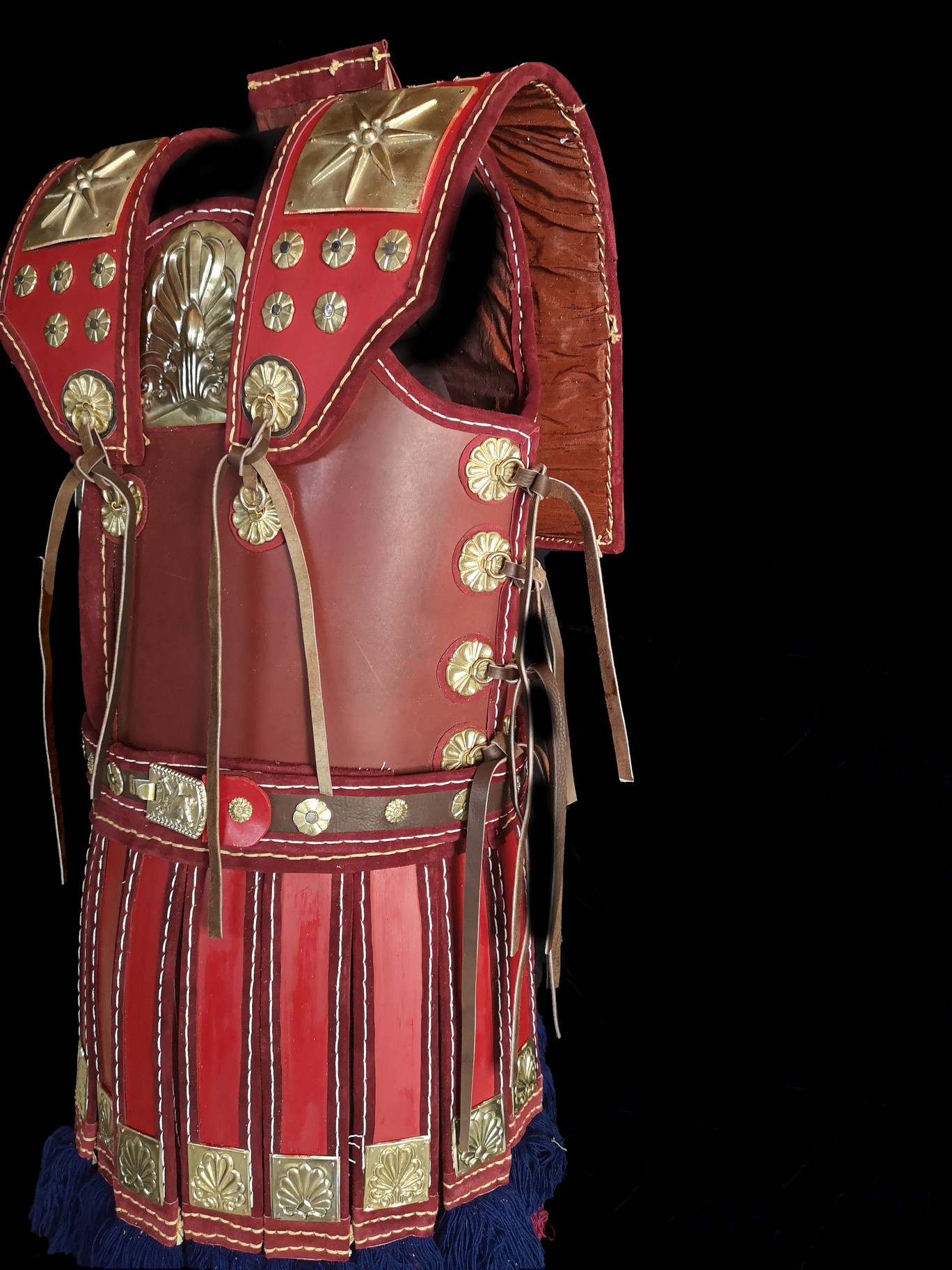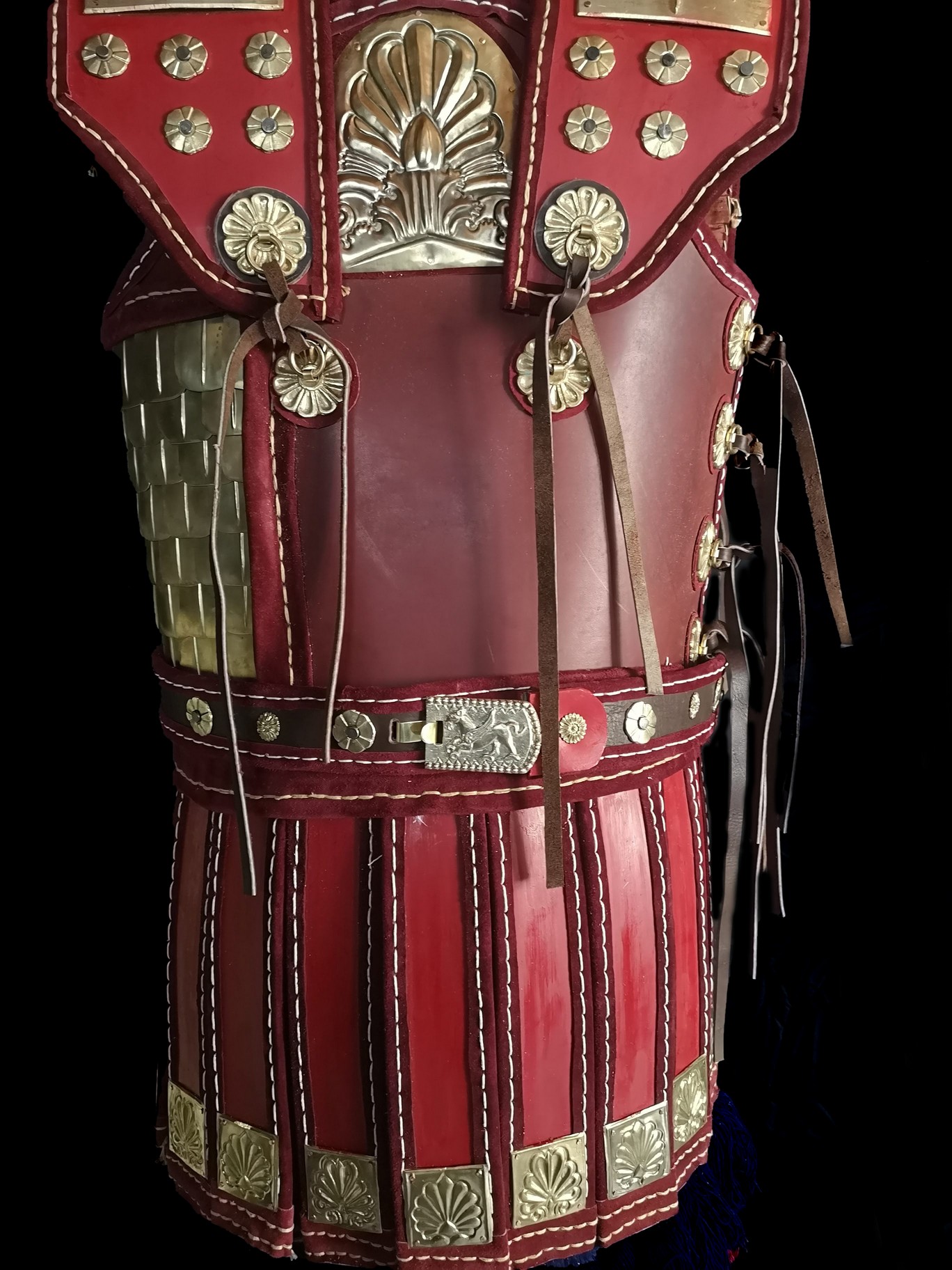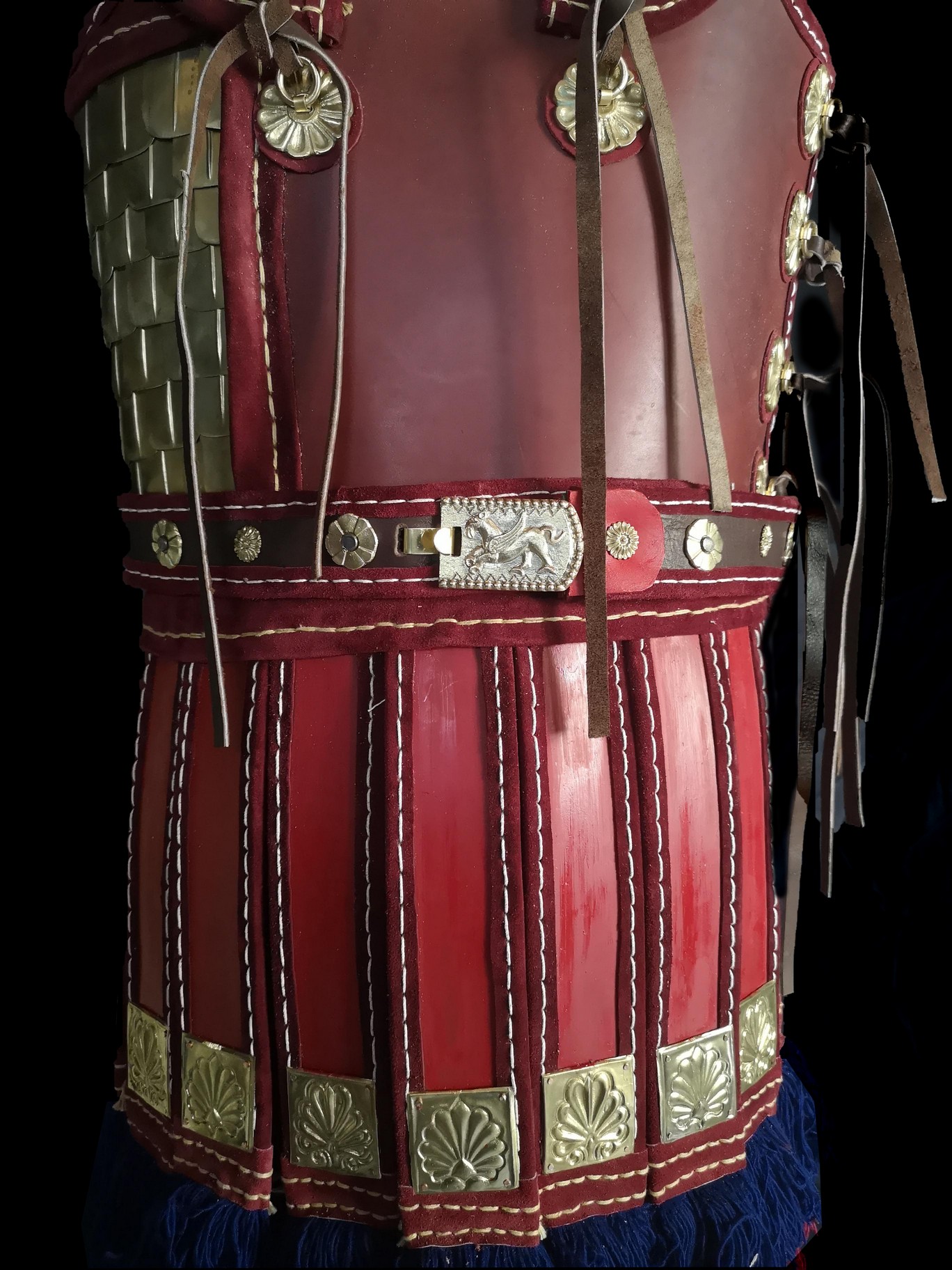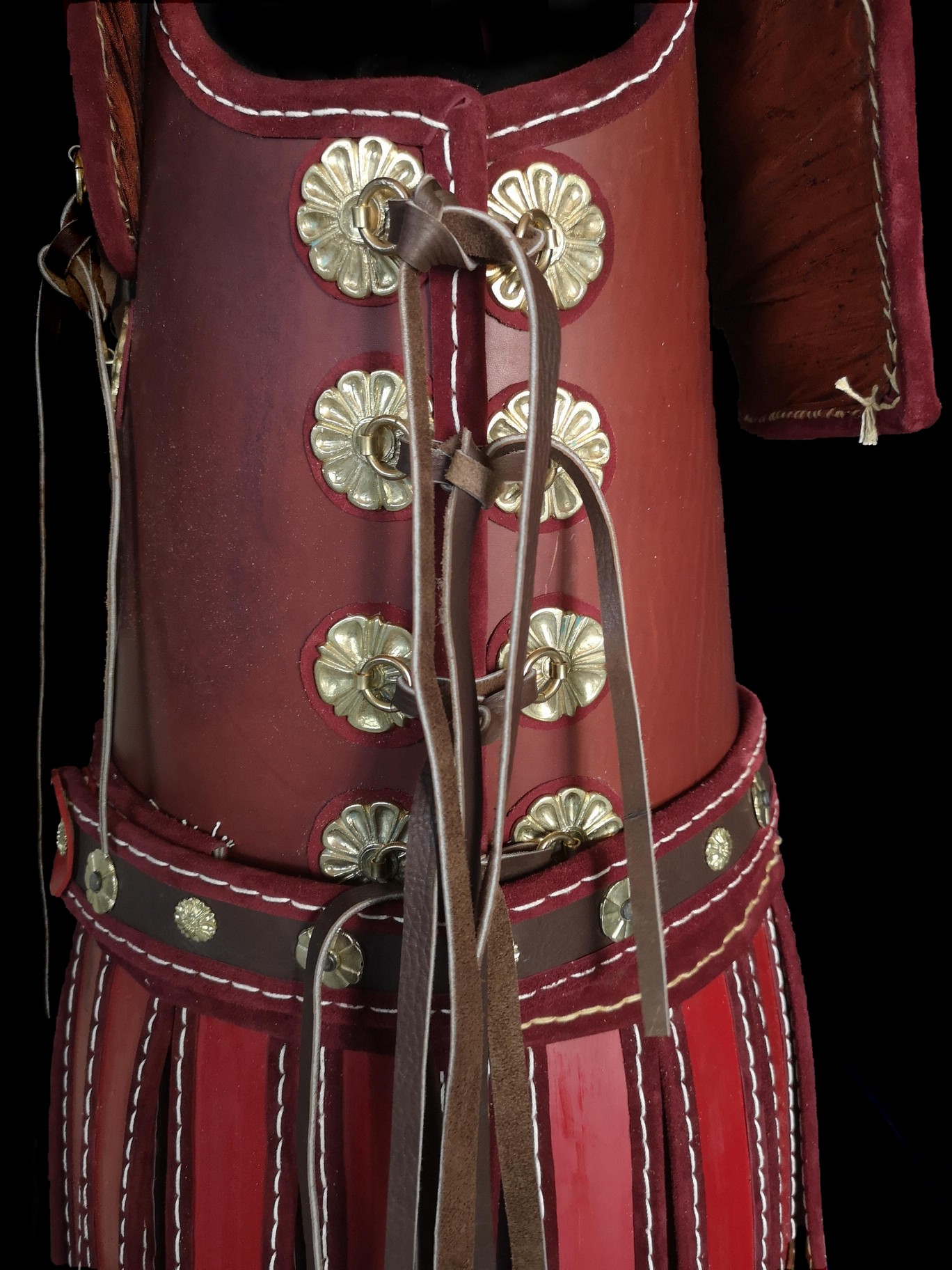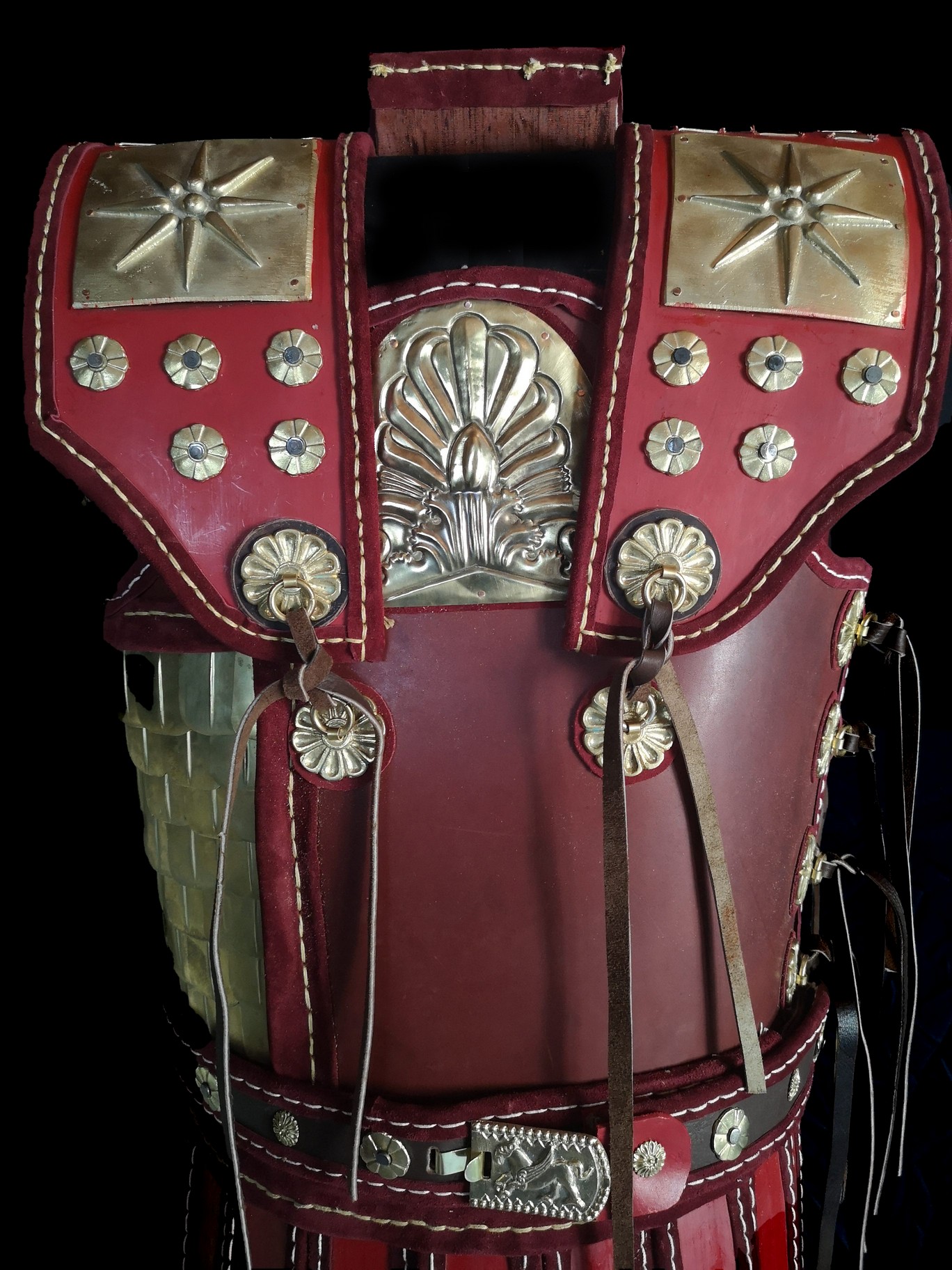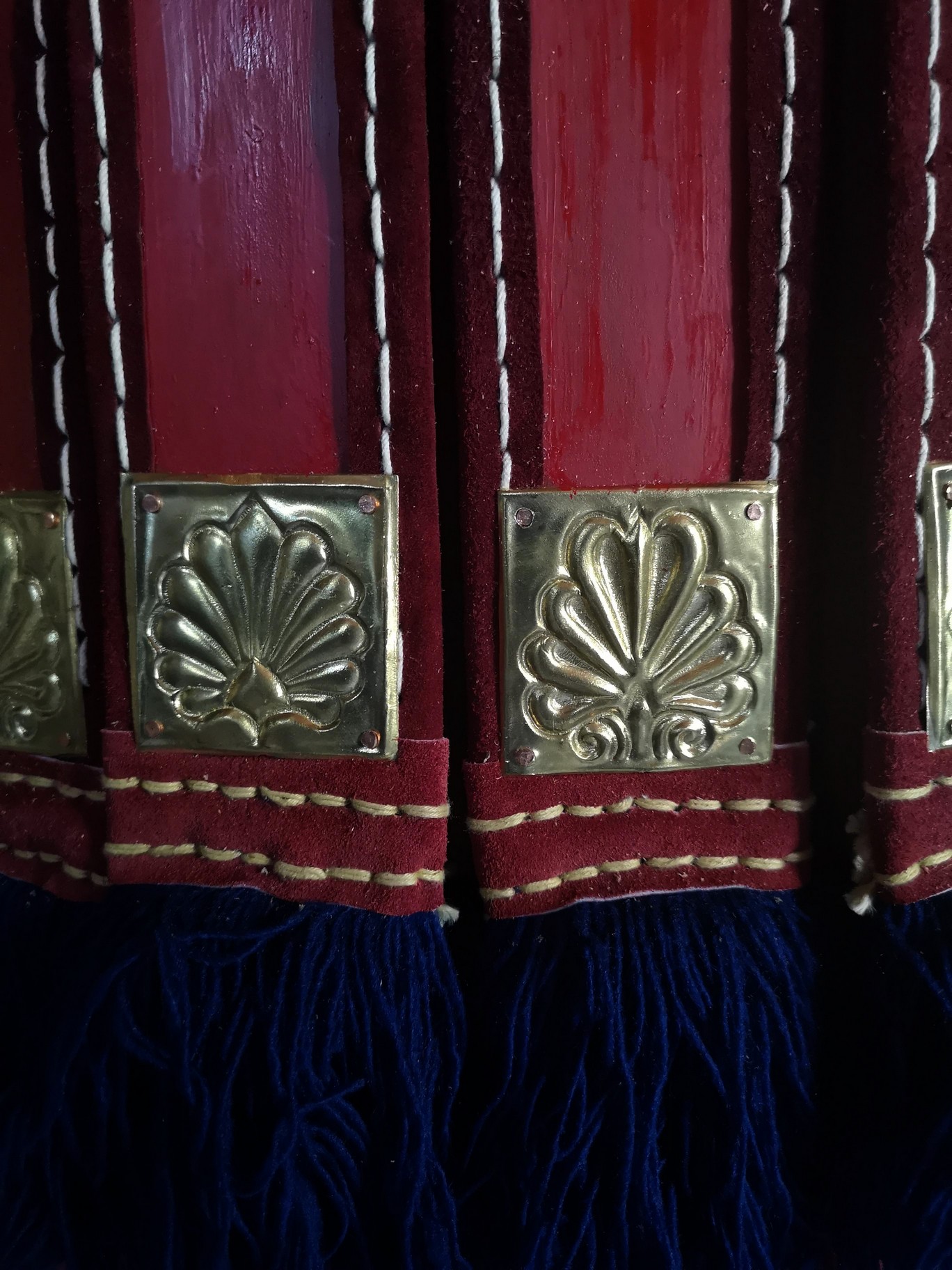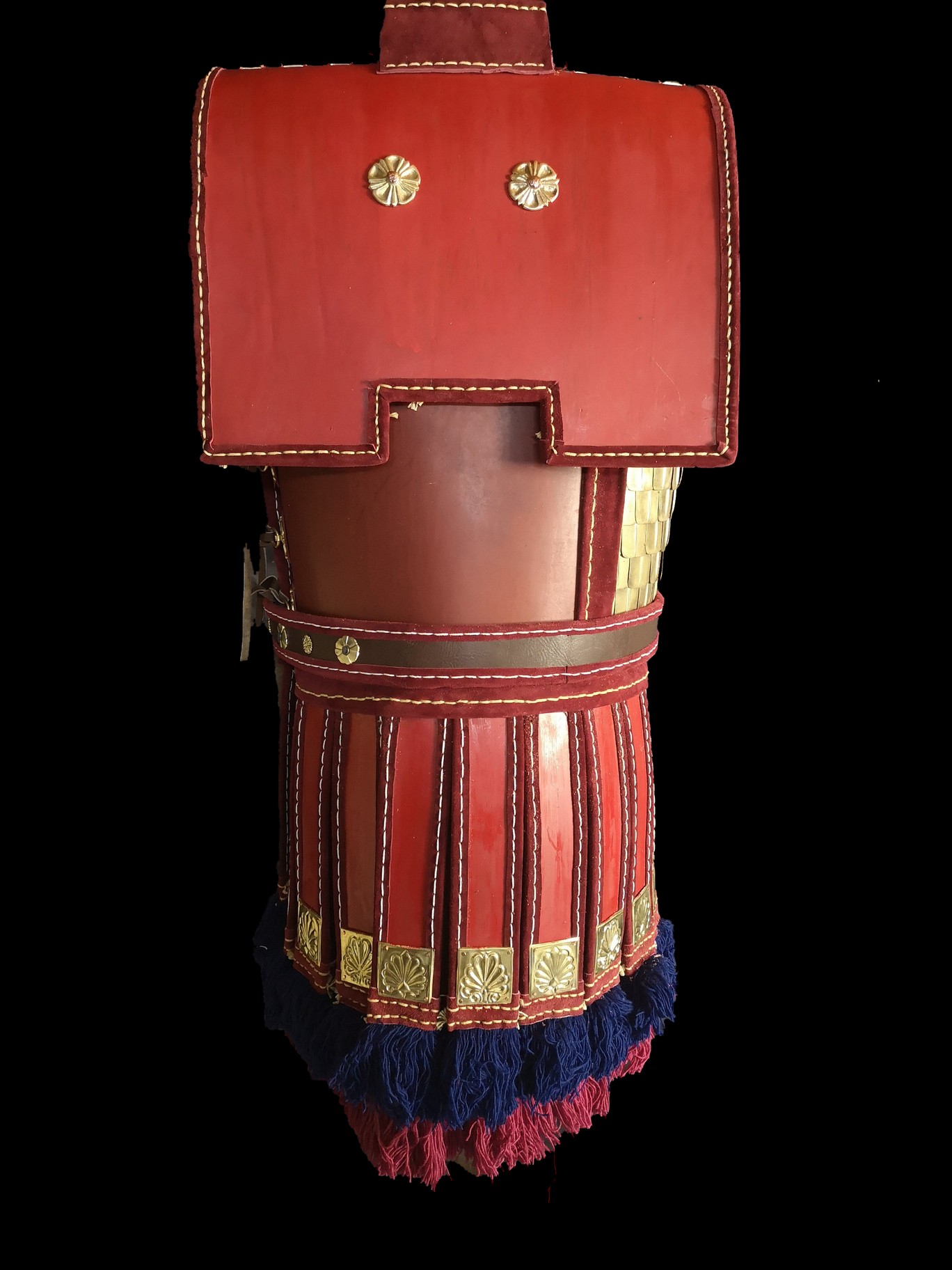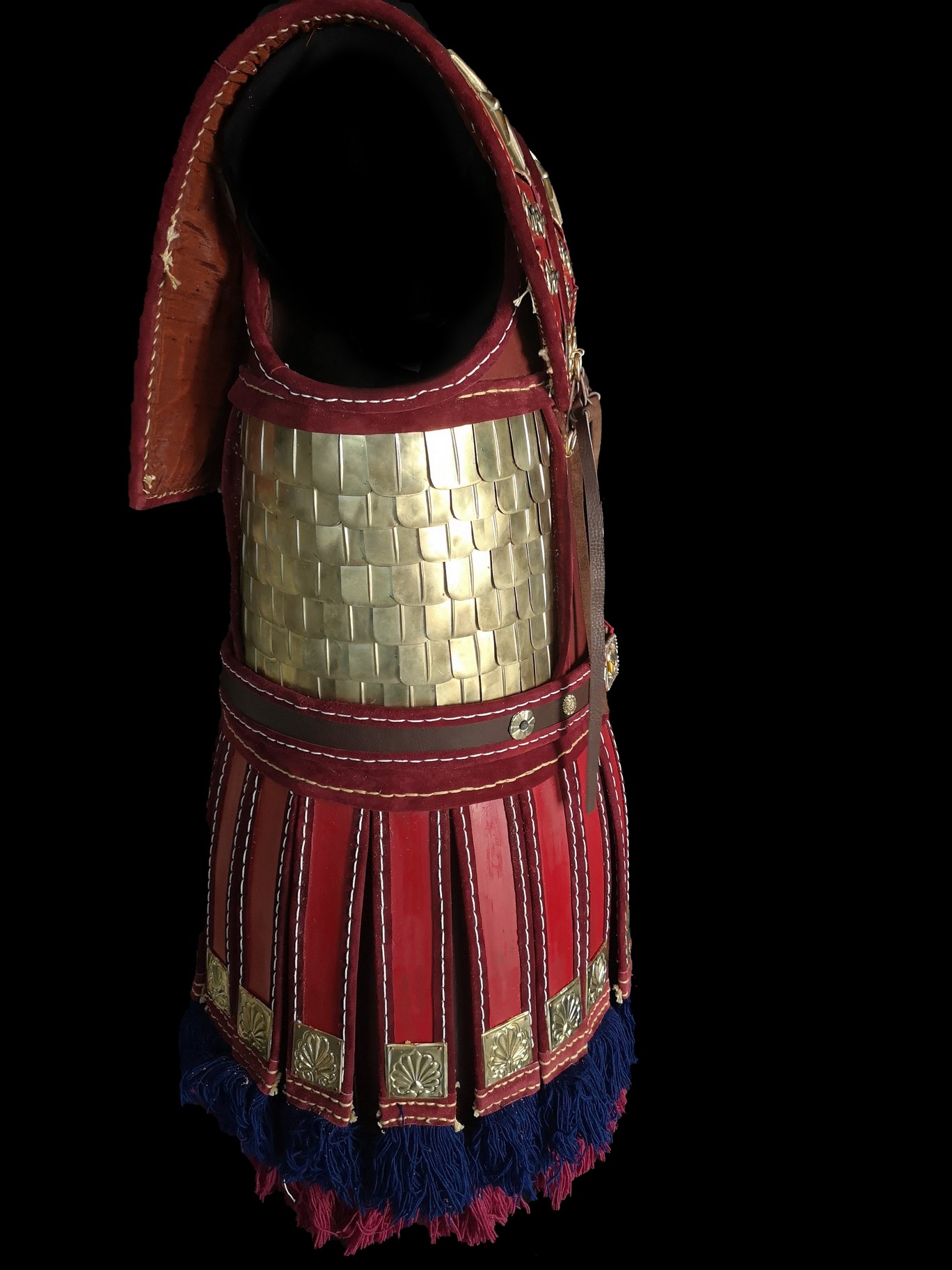Ancient Greek Armors
Αntigonos A’ cyclops
382-301 B.C.
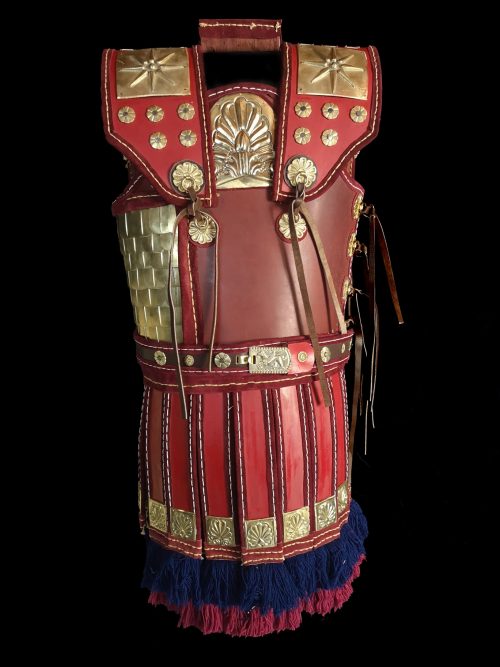
Τhe thorax has been inspired by the wall murals of Macedonian tombs at Lefkadia region (between Mieza and Pella, North Greece).It follows the generic outline of a Linothorax torso, it being consisted by torso, pteryges (“πτέρυγες”) and epomides (“επωμίδες”) constructed exclusively from thick leather.
At the frontal parts of the red painted epomides two stylize Macedonian Suns have been placed, dominant emblems of the Macedonian Kingdom and bronze flora like protective heads as well.
The right side of the torso has been covered with rectangular bronze scales, ensuring this vanurable area from incoming threats creating a reinforced flexible “square” beneath the right armpit. In the center of the breast area have been placed a flora like “Anthemion” copied from the flora decorations of the graves ( common decorative theme in Greek art).
The thigh area is being protected by a double layer of thick leather pteryges (long and short) which offer an efficient level of protection and mobility.At the end of leather bands decorative woolen tufts and “repusse” made flora decorative elements have been added with care.
The fastening mechanism includes six pairs of bronze loops with margarita-like casted bronze bases, two pairs in the breast area and four pairs in left side of abdomen. A textile substratum of linen is necessary to be placed to the inner surface of the greaves in order potential wounds to be avoided.
Around the waist a heavy military belt with bronze casted buckle (decorated with griffin-like mythical creature) completes the armor.
All the endings have been covered with folded purple leather sewed by hand.
